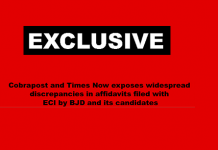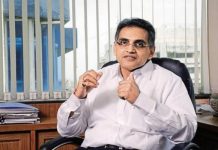Nearly 30 years since the Hashimpura massacre, the then superintendent of police of Ghaziabad district has come out with a book giving his version of the gory incident in which 42 Muslims were gunned by jawans of the Provincial Armed Constabulary (PAC).
“Still weighing heavy on my conscience is that horrifying night of May 22 in the humid summer of 1987. And the subsequent days, similarly, are etched in my memory like as if on stone – it was something that overpowered the cop in me. The Hashimpura experience continues to torment me,” says Vibhuti Narain Rai.
“Hashimpura 22 May 22: The Forgotten Story of India’s Biggest Custodial Killings” is a blow-by-blow account of the massacre and its aftermath. Translated by Darshan Desai from the Hindi version, it is published by Penguin Books.
“It was around 10.30 p.m. and I had just returned from Hapur. After dropping the district magistrate, Nasim Zaidi, at his official residence, I reached the residence of the superintendent of police.
“Just as I reached its gates, the headlights of my car fell on the frightened and nervous sub-inspector, V B Singh, who was then in charge of the Link Road police station. I could guess something terrible had happened in his jurisdiction. I asked the driver to halt the car and got out,” Rai recalls.
According to him, Singh seemed too scared to explain coherently what had happened exactly.
“Even then, his string of broken words was enough to shock anyone. I could make out that the jawans of the Provincial Armed Constabulary (PAC) had killed some people, most likely Muslims, near the canal crossing the road leading to Makanpur,” he writes.
Why were they killed? How many were killed? From where were they picked up? All these questions came to Rai’s mind.
“After several attempts of trying to get Singh to be more coherent about the details, this is what I gathered about the incident: It was around 9 pm when V B Singh and his colleagues sitting at the police station heard gunshots from near Makanpur and they thought there were some dacoits in the village.
“Singh turned his motorcycle towards that track, with another sub-inspector and a constable sentry riding pillion. They had barely travelled a few metres down the road when they spotted a truck driving towards them at breakneck speed.
“If Singh had not swerved his motorcycle off the road, the truck would have knocked them down. Just as he was trying to control his vehicle, Singh looked behind at the yellow coloured truck with ’41’ written on it and some men in khaki uniform sitting at the rear. It was not difficult for professional policemen to figure out that the vehicle was from the 41st Battalion of the PAC.”
Wondering why a PAC truck was on that road at that hour of the night and if it had any connection to the gunshots they had heard, they proceeded towards Makanpur.
“They must have driven just a kilometre further when Singh and his colleagues saw something very scary. Just short of Makanpur, there were bodies strewn in a pool of blood in the ravines around the canal. The blood was still oozing out of the bodies and was slowly seeping into the ground.
“From what Singh could see from the glow of his motorcycle’s headlights, there were bodies lying in the bushes, on the canal banks and floating in the water as well. It did not take the sub-inspector and his colleagues long to link the speeding PAC truck with the gunshots and the bodies in the canal,” Rai writes.
He says the story is a “sordid saga of the relations between the Indian state and minorities, the amoral attitude of the police and a frustratingly sluggish judicial system.”
Last year, 16 Uttar Pradesh policemen who were accused of killing the 42 Muslims were acquitted by a court. What triggered their killings? Rai attributes these to the horrifying period when this incident occurred.
“It was nearly a decade since the Ram Janmabhoomi agitation had hopelessly divided the entire nation. The agitation that started in the late 1970s, and was getting more aggressive each day, had driven the Hindu middle-class towards communalism.
“The maximum number of inter-community riots post Partition took place during this phase. It was obvious that the PAC and the police could not have remained insulated from this social chasm for long.” Rai says Hashimpura experience continues to torment him. “Between May 22, 1987 and March 21, 2015, when the verdict on the crime came, it would seem that Indian society had undergone a sea of change. The changes that have taken place in the political, economic and social spheres have metamorphosed the social milieu of the country.
“But the fact that the case dragged on endlessly in the courts actually serves as a grim reminder that nothing has really changed. Rai says that just a few days after the Hashimpura massacre, he decided to write about it and bring its details out to the open but his writing began at a slow pace because of his busy schedule.
“But when the National Police Academy, Hyderabad, granted me a research fellowship in 1994, my prospects brightened. My subject was related to the image of the police among Hindus and Muslims during communal riots, and I deliberately chose this topic in order to work on the book; it also provided me with a year-long relief from regular routine,” he says.
(Sourced from agencies, Feature image courtesy:peoplesvoice.in)



























